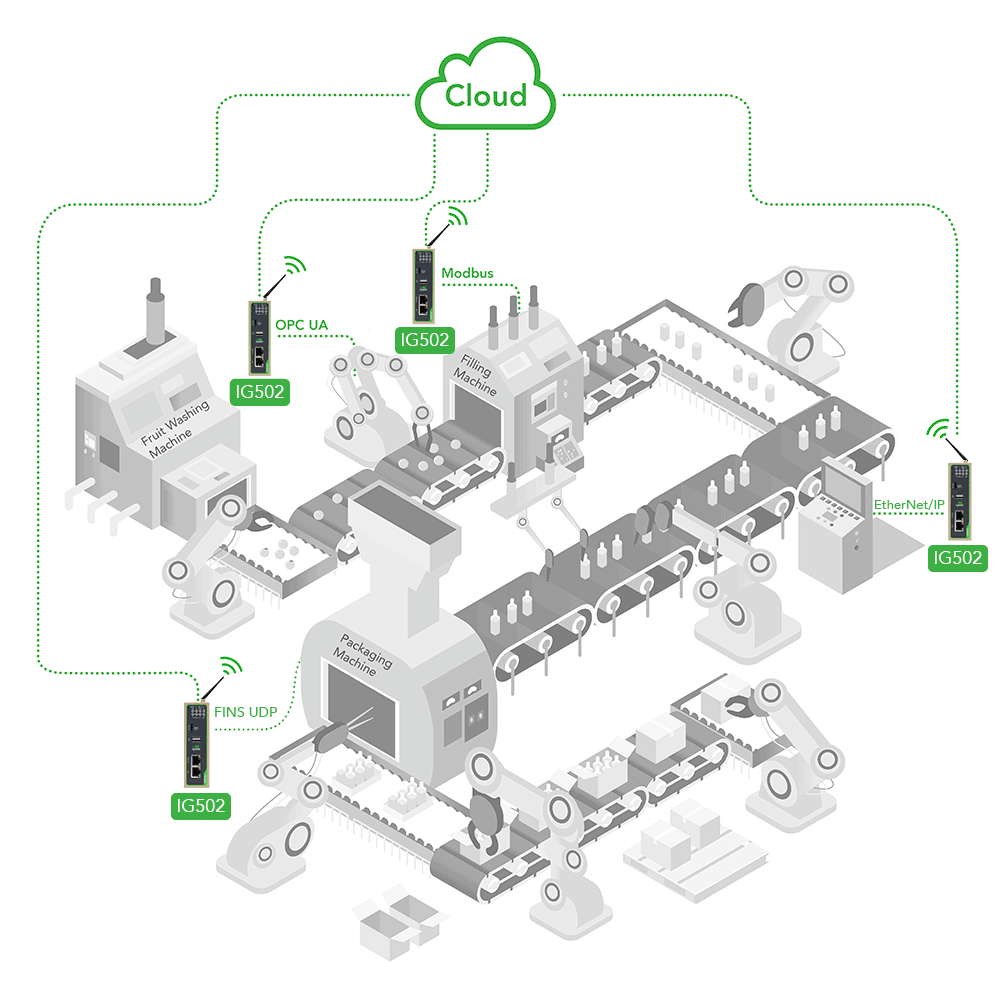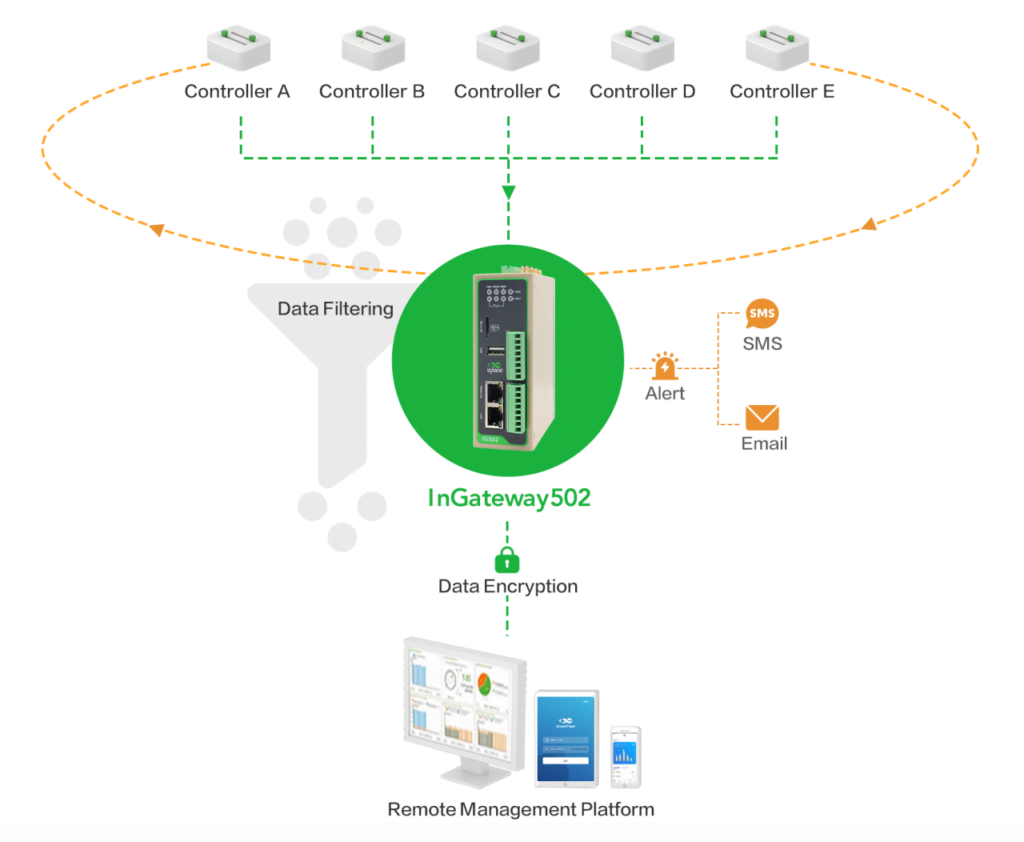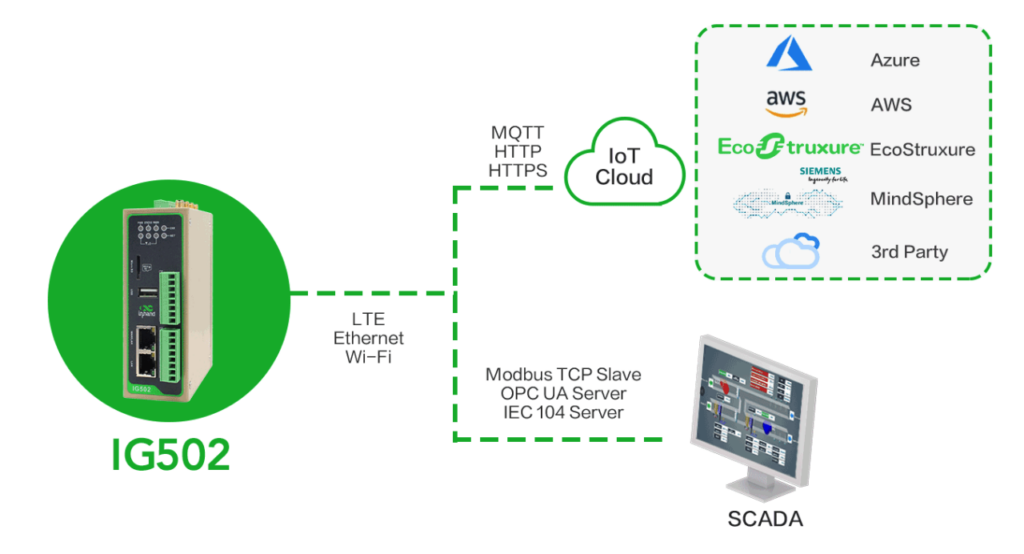“Cloud + Edge” Coordinated, Thrive in the IIoT Era
“Cloud + Edge” Coordinated, Thrive in the IIoT Era
Contemporary industry features a growing number of devices distributed on various industrial sites. Given long-time operation, it is inevitable that some of them may go wrong now and then. To identify problems earlier and take preventive measures, it is necessary to keep track of their working status. Traditionally, maintenance engineers are frequently sent to the site on patrol. However, this can incur considerable costs and, more often than not, problems cannot be identified promptly.
As more devices are connected to the Internet and generating increasing data volumes, manufacturers and users are seeking not only more efficient maintenance but more insights drawn from data to facilitate growth. This implies deeper digging of data, better processing and analytics. All those demands are creating greater technical challenges for a coordinated “cloud + edge” IIoT ecosystem.
1. Collect data from different devices
Devices deployed on industrial sites keep capturing data from different parts of the site, monitoring both the machines and the environment. As those devices are built with different interfaces (serial ports, Ethernet ports, Bluetooth, Wi-Fi), it is not easy to acquire data from them all. Various types of devices on site are generating massive data, which is a great challenge faced by gateways that are expected to collect and process them.
Different devices communicate with different protocols. Even within the same category, there can be quite a few options. Take PLCs as an example. There are several major players in the industry: Siemens, Schneider Electric, Allen-Bradley, … each has their own protocol. Meanwhile, some manufacturers communicate via their private protocols. This creates compatibility problems for users, as most traditional gateways that transmit data support only a few of those protocols. This means several kinds of gateways are needed for a single site, which implies huge expenditure on equipment and high costs for brand switch.

As onsite devices become more diverse and the above-mentioned problem gets acute, it is necessary that multiple industrial protocols be integrated and private protocols be compatible too, so that data from different sources can be transmitted by a single, “all-in-one” IIoT gateway.
2. Pre-process data on the edge
In the era of cloud computing, data are uploaded to the cloud for processing, storage and analysis. As massive data constantly being generated, they are creating heavier load to the cloud. Think about if all data should be sent to the cloud bit by bit, wait for the cloud to receive them all and reply with command (or sometimes no command at all) before further action is taken. This means great latency in data transmission. Even though 5G can solve the problem of speed, the cloud is overloaded with huge amounts of data.
Thus comes the concept of edge computing. With pre-configured conditions or programmed tools, data collected from different devices can be filtered near where they are generated (the “edge”). Some of them can be processed locally. For example, if certain threshold is reached, the gateway can immediately respond by, say, sending alerts to maintenance people, or change the parameters of PLCs. It can also control other downstream devices via I/Os when certain conditions are met, so that controllers using different protocols can exchange data.

Then the rest, “cleared” data is sent to the cloud. This not only saves dataflow and bandwidth, but more importantly, relieves the cloud from excessive load.
3. Upload data to the cloud
Today’s world is increasingly data driven. As the core part of the IIoT ecosystem, the cloud plays a major role in centralized management, data analytics and decision making.
Just as data-collecting devices differ in communication protocols, different clouds vary in connection and interaction methods. For instance, major public clouds such as Microsoft Azure and AWS are connected with SDK. Interaction logic between clouds and requested functions from the edge are also different. Therefore, sending data to the cloud means a lot of work in integrating the gateway and the cloud.
A cloud gateway enables system integrators to connect to the cloud with ease, and most users require custom interaction with the cloud in order to upload their data. Luckily, as technology advances, today’s cloud gateway usually supports major IoT clouds. It takes only a few steps to configure the cloud so that data can easily travel from the source to the cloud.
While system integrators seek to monitor everything from the cloud to ensure their systems work properly, manufacturers need to manage their factories via SCADA. Thus, the gateway enables local SCADA systems to acquire data via industrial protocols and the cloud via MQTT.

4. Implement digital projects
It takes time to get fully digitalized. Starting a new project usually involves quite a bit of work: to prepare all the devices, integrate them, program your applications, etc. In a fast-moving world, time is everything.
A “cloud + edge” solution should be easy for deployment and configuration so that new projects can be implemented as soon as possible. As more management tools emerge, it is almost by default that those gateways can be managed from a cloud platform. Web configuration is supported, and the configuration can be imported and exported. Deployment and batch management can be easily done on the platform.
To meet ever changing business demand and respond flexibly to new requirements as projects progress, customization becomes necessary. For instance, the cloud platform needs different support from the gateway in its iteration; as data analysis deepens, some data processing logic on the edge needs to be adjusted.
Summary
The cloud and the edge are working unprecedently close in the IIoT. Through efficient “cloud + edge” coordination, we can make better use of the edge, have a better understanding of what’s going on in the field, make sure devices working efficiently and stably, thus delivering better user experience. With a more efficient and sounder database, we can draw better insights for product improvement and parameter optimization, enhancing competitiveness in the Industry 4.0 era.